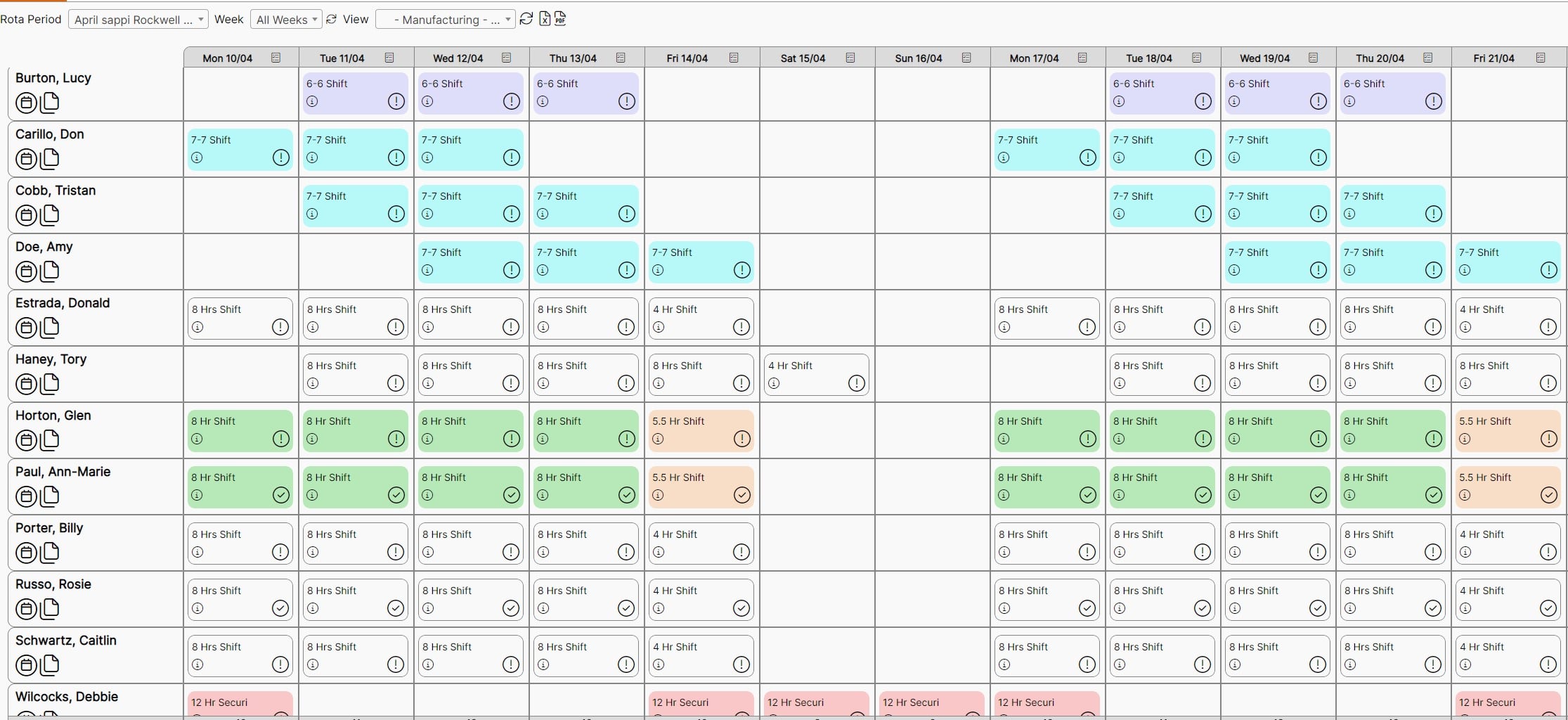Reasons why you should stop using Excel to schedule work:
Maintaining and constantly updating spreadsheets can be unnecessarily cumbersome and a time-consuming chore for busy managers. Adopting scheduling software instead is an advantageous approach that saves time and streamlines communication between employees, thereby reducing administrative hassles to a great extent.
With Excel spreadsheets, sharing them over Google docs or a network folder takes effort, and updating them when shifts change can be hard and time-consuming. In fact, about 50% of employers spend more than two hours each week editing and sharing newly revised schedules to their staff. This defeats the purpose of using Excel, which was to make things easier and save time.
Another significant issue with Excel is the over-reliance on the one Excel guru in the office. When that person steps down or is absent, the whole company can endure serious workflow disruptions and come to a screeching halt since nobody else knows how to manage these sheets correctly, let alone update them.
Making useful reports with Excel is another hindrance, lacking real-time notifications and alerts if there are irregularities with timesheets or if changes need to be implemented. Additionally, communicating information to employees effectively is tough since everyone can see each other’s work schedules and sometimes fail to confirm what they saw. However, with scheduling software, all this can be avoided since employees can see only what is required for their specific responsibilities and managers can receive automatic confirmations once the schedules are created.
Put simply, scheduling software is an essential tool for modern workplaces that desire efficiency, accurate reports, and productive workforces.
Spreadsheets may not be ideal for your business’ data management system! Sure, they can be useful for keeping tabs on some data, but let’s face it – they are prone to human errors, they do not scale well and they lack real-time updates.
One of the biggest issues with using spreadsheets is that they are not structured in a way that allows for easy consolidation from multiple sources – keeping tabs on different inputs can quickly turn into a logistical nightmare! Additionally, spreadsheets are not built to support multiple users, meaning that collaboration is simply not an option without shared online spreadsheets – which often lag behind when it comes to functionality. And let’s not forget how easy it is for one tiny mistake to completely throw off your system.
Perhaps even more concerning is the fact that using spreadsheets for data management means you are not proactively tracking your business’ performance. In fact, spreadsheets require manual input and updating – so real-time updates are simply not an option. Unfortunately, this means that you could potentially miss out on some critical insights into your business processes.
Let’s take a closer look at the tremendous advantages that dedicated software for forecasting and scheduling can bring to your business. Although it may require a larger investment compared to using Microsoft Excel, the real question you should be asking is how much this solution can save your company in the long run. And, there’s no doubt that dedicated software will prove more efficient and profitable than spreadsheets.
Finally, let’s talk about scalability! Spreadsheets may work for small businesses, but medium to large enterprises will quickly find themselves overwhelmed when trying to navigate through a plethora of data points. And when it comes time to integrate that data with ERP software? Good luck! This is a time-consuming and frustrating process, and the chance for error during this time is notably greater.
In conclusion, while spreadsheets have their uses, it is important to realize that they are not an ideal solution for businesses looking to stay ahead of the game. There is simply too much at risk when it comes to human error, scalability, and integration.

Isn’t it clear why so many businesses today choose scheduling software over spreadsheets? With its user-friendly interface and advanced features, scheduling software delivers much more than Excel.
Invest in your business, and let dedicated software help you improve on your daily activities and planning capabilities.
Visit our rostering page for further details or Book a demo at a time to suit you.


